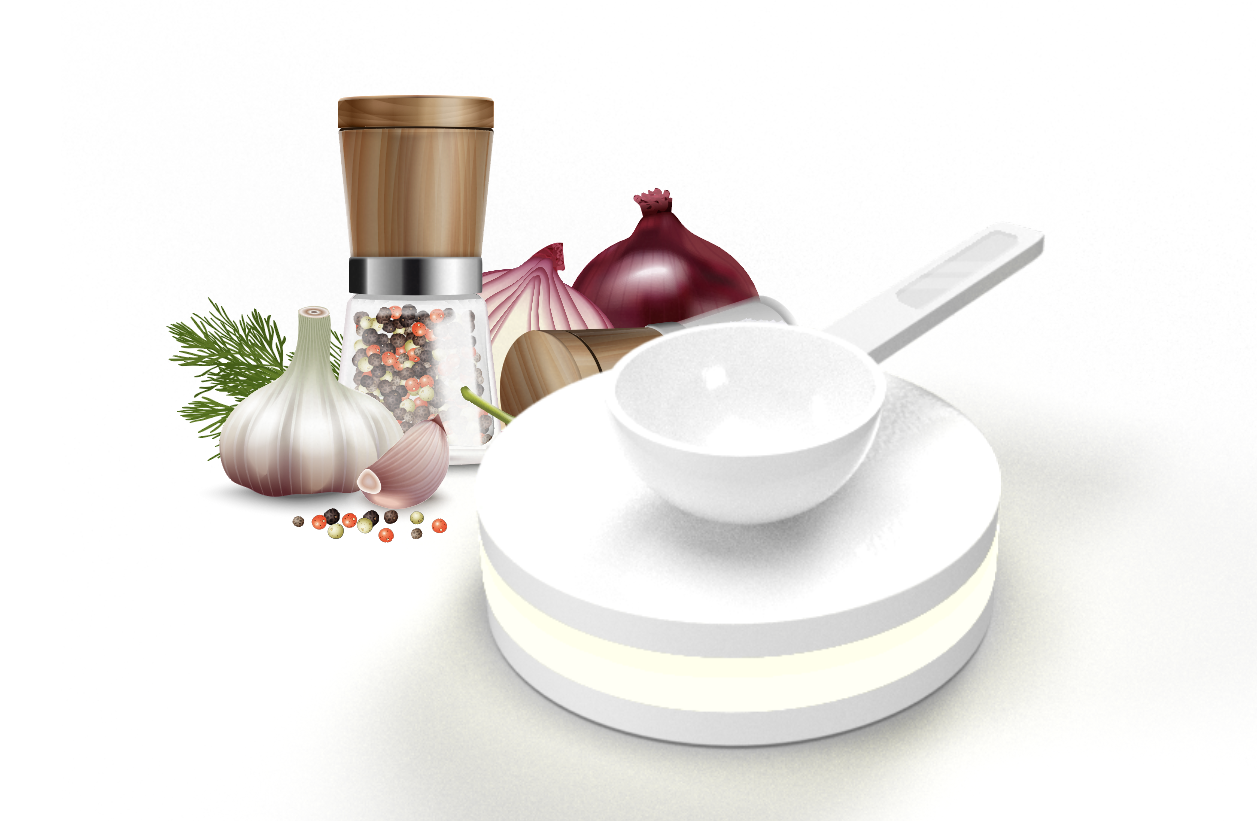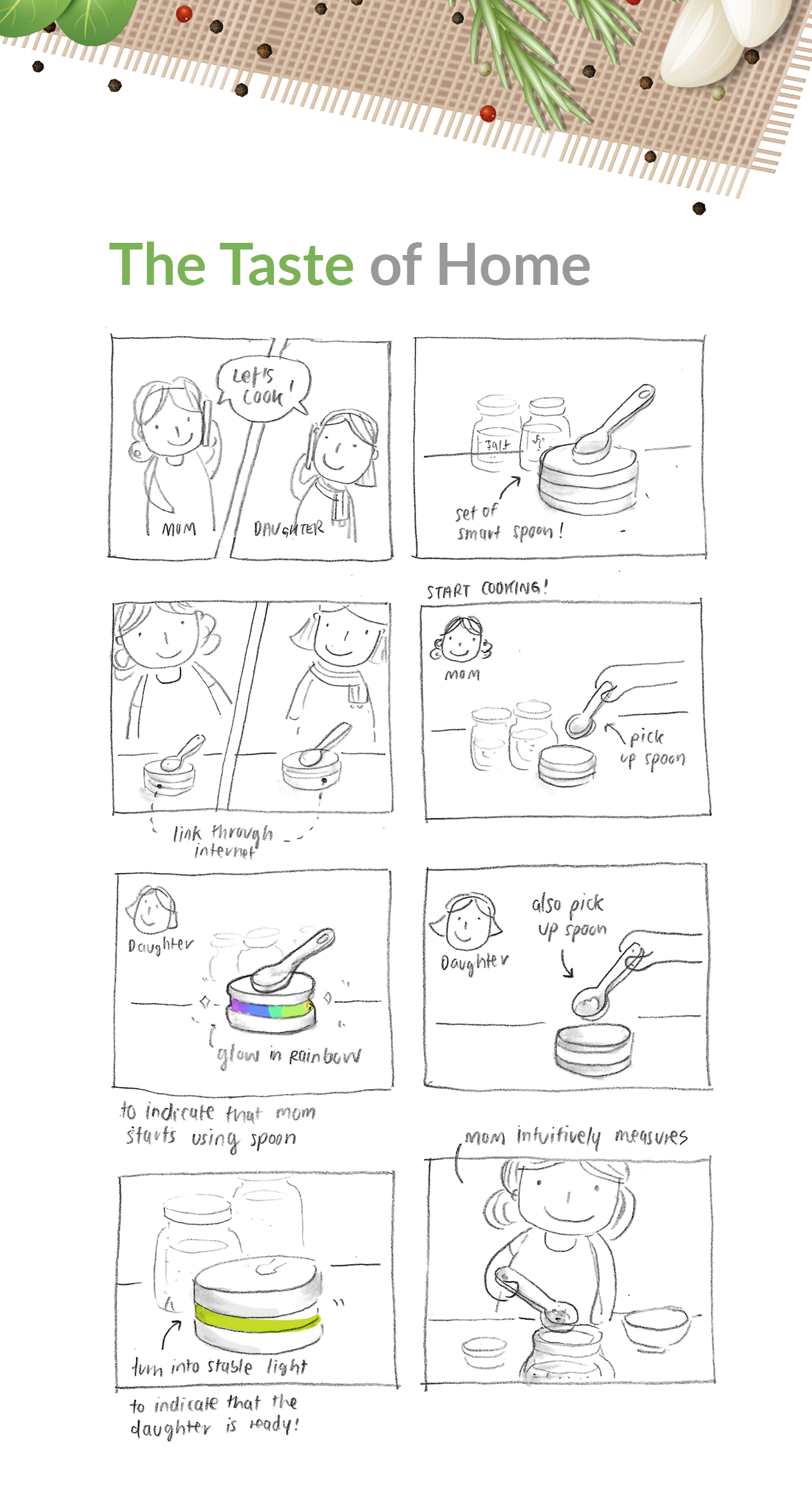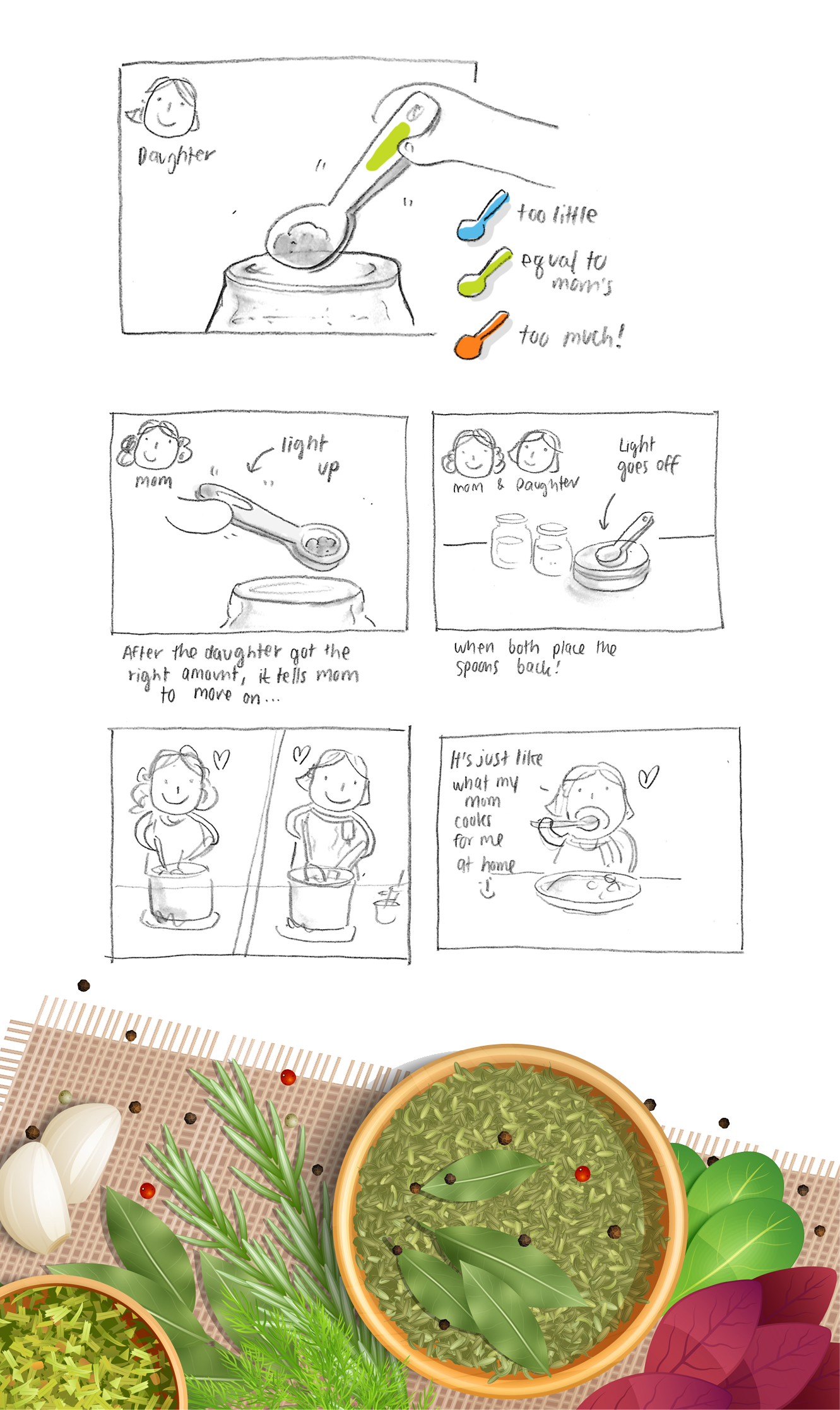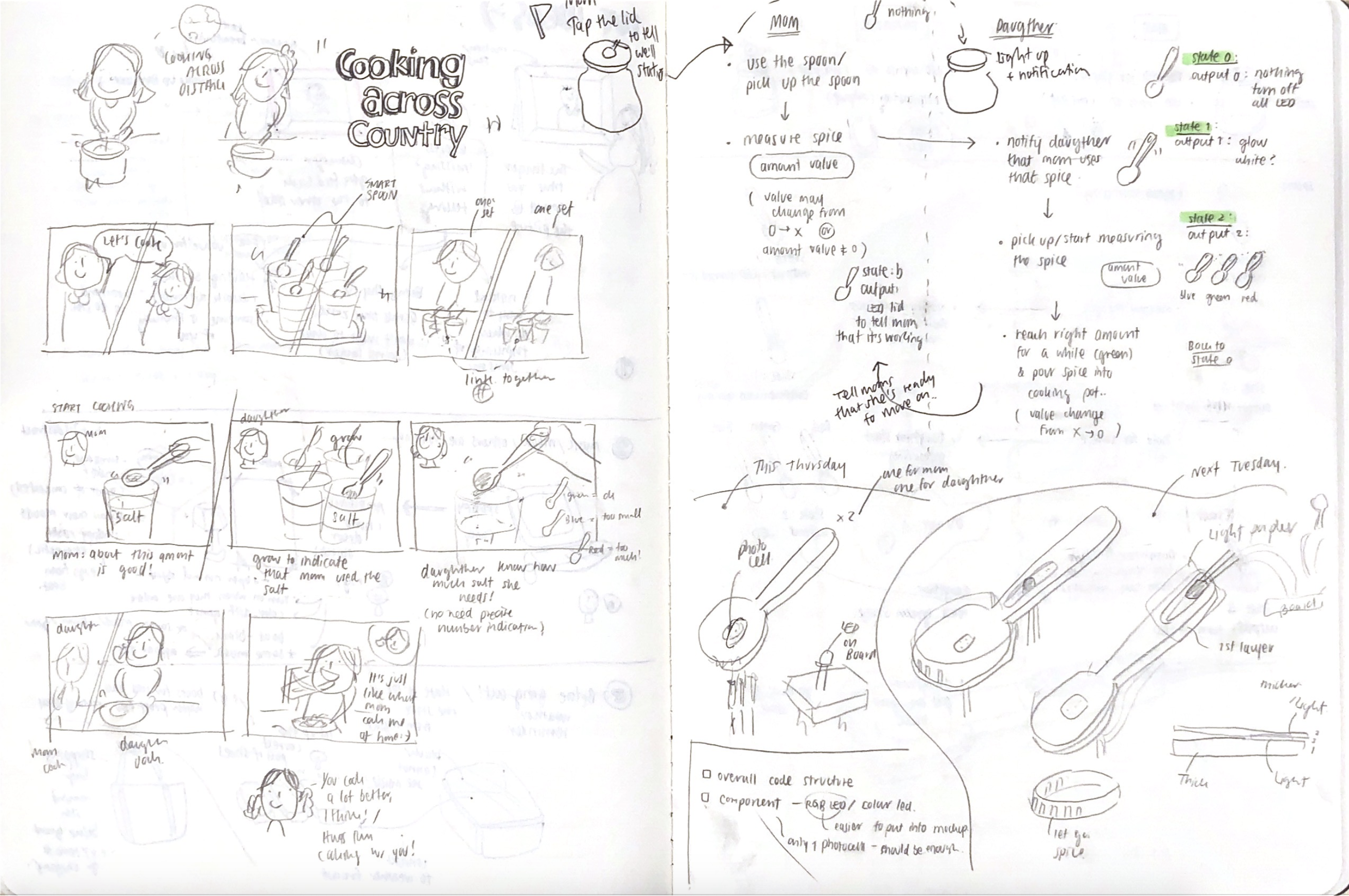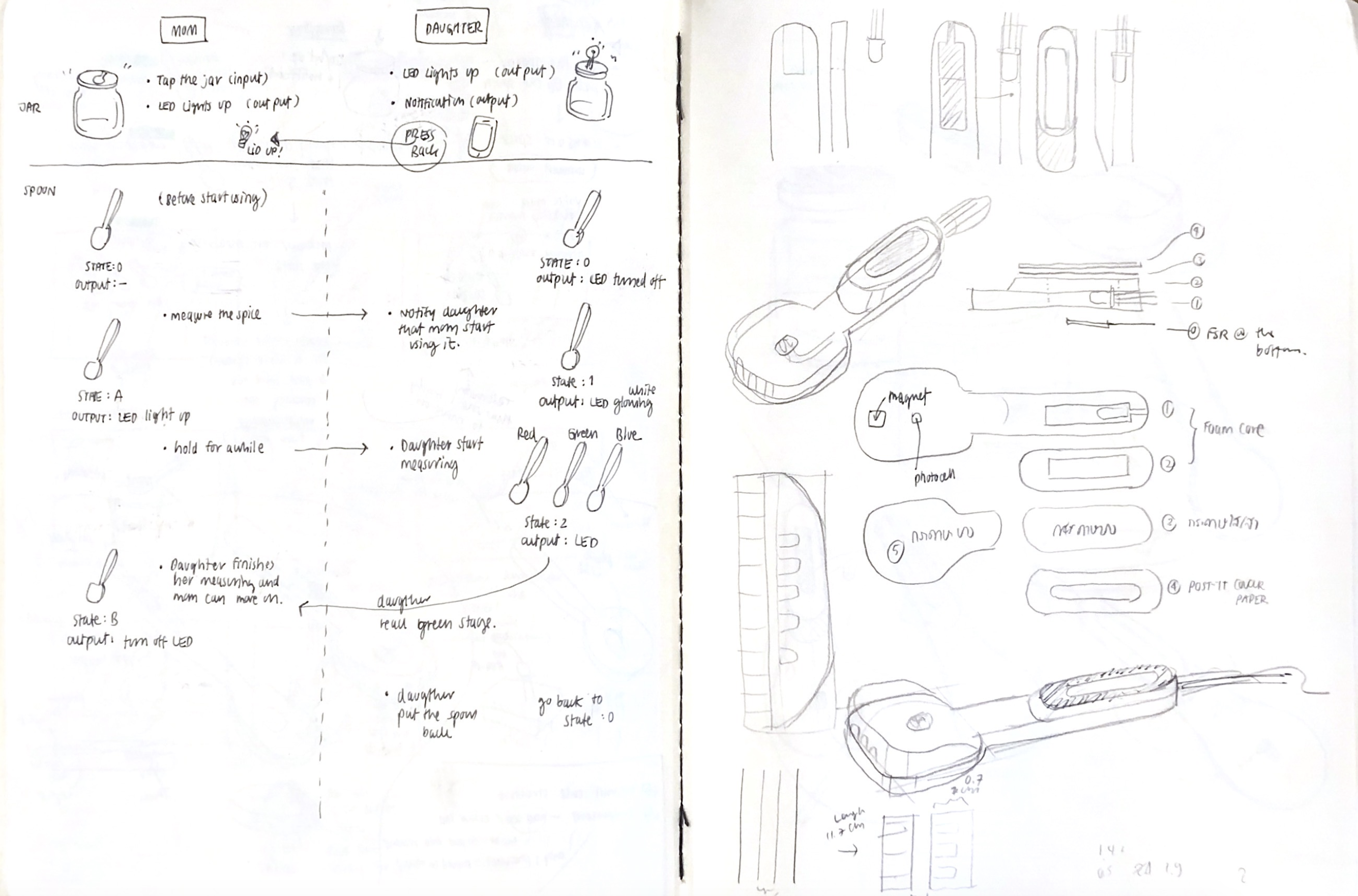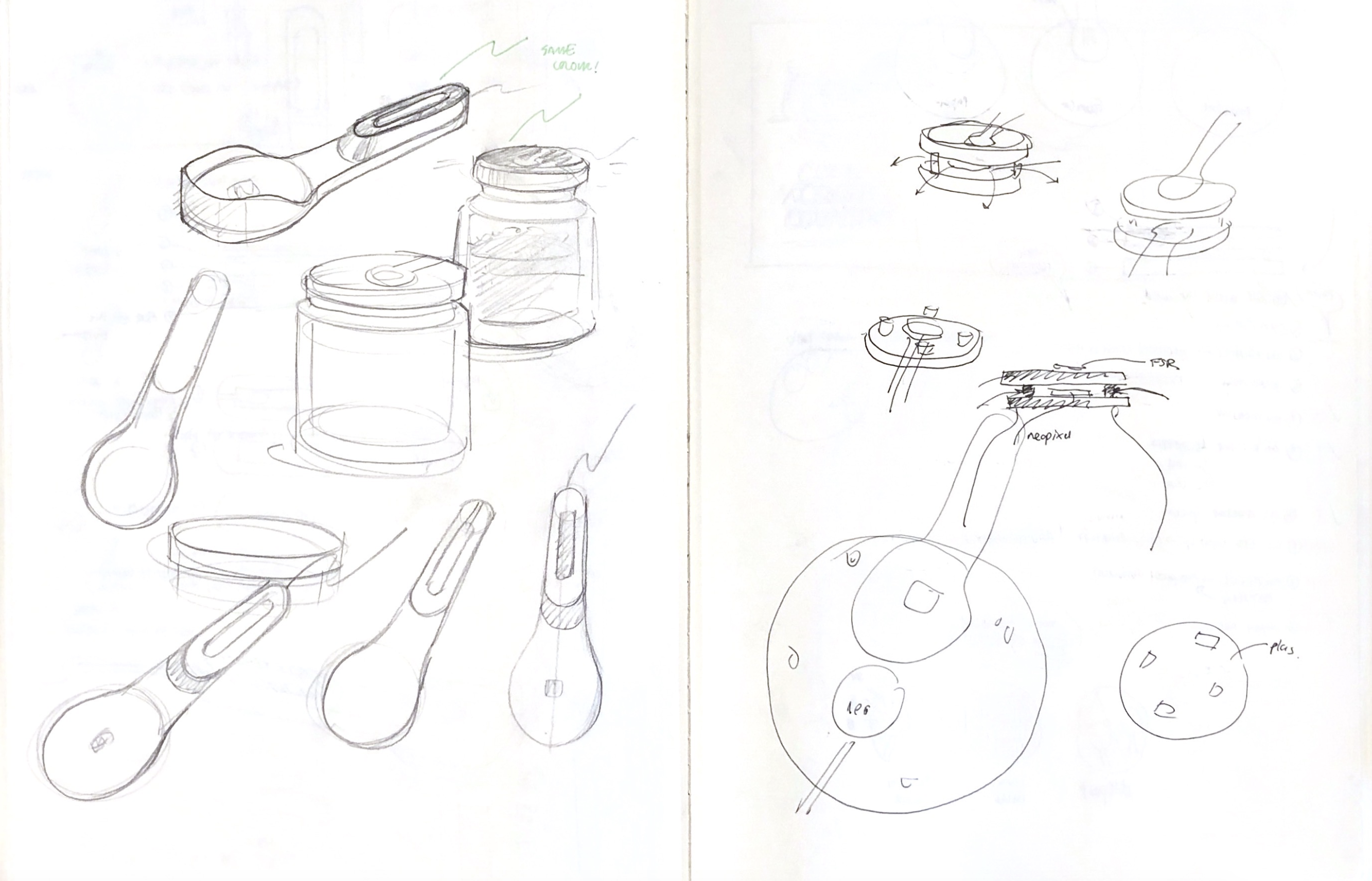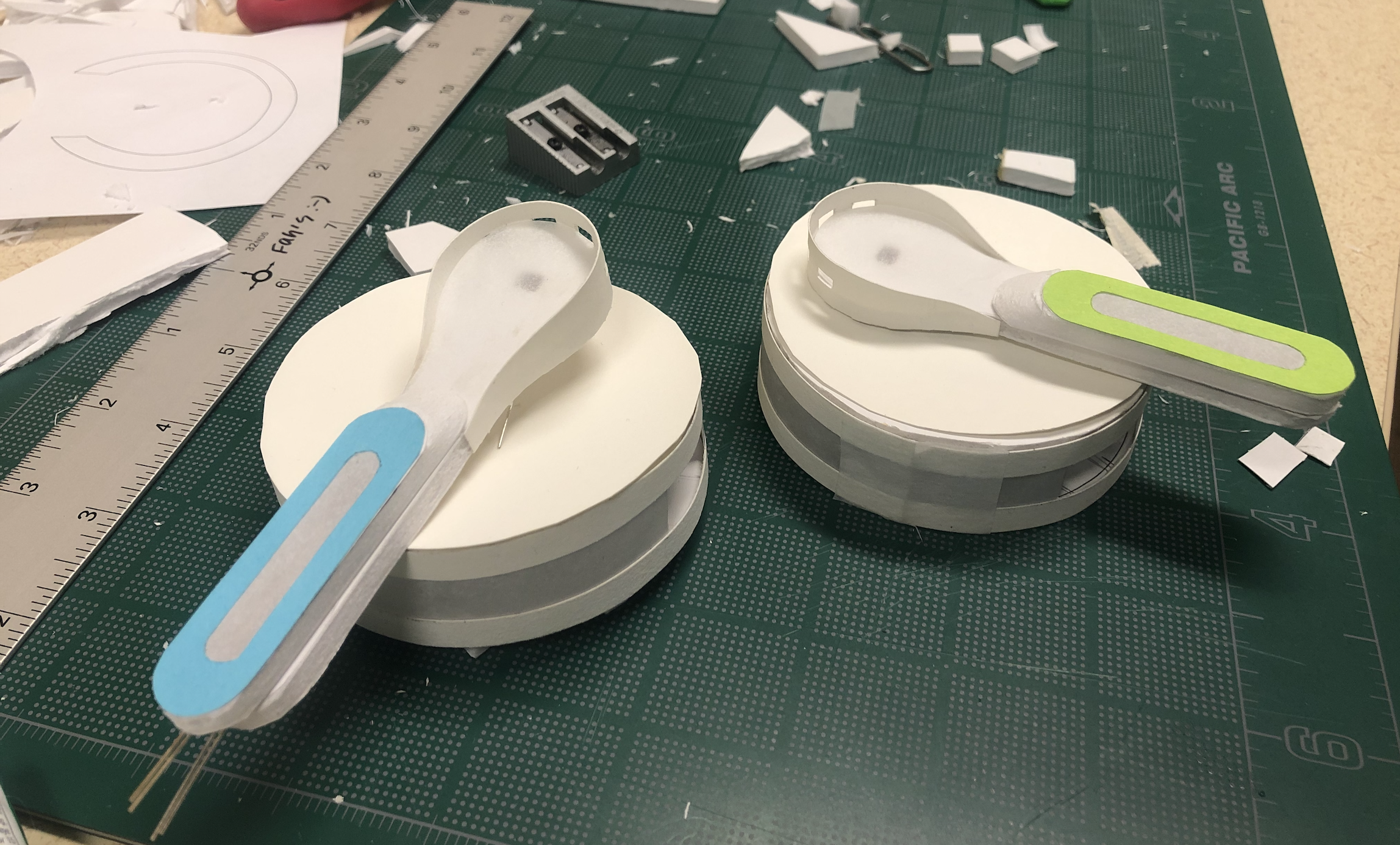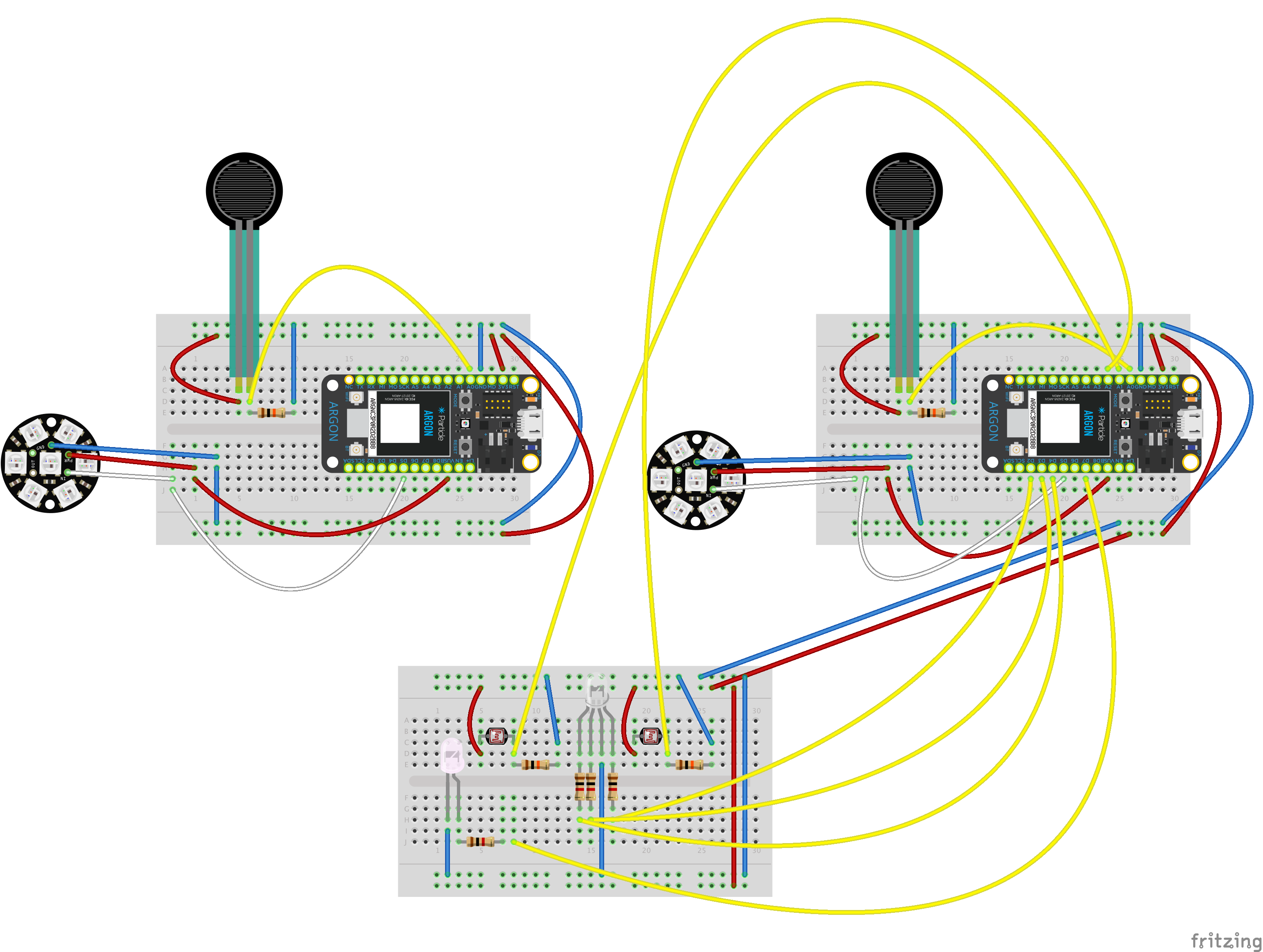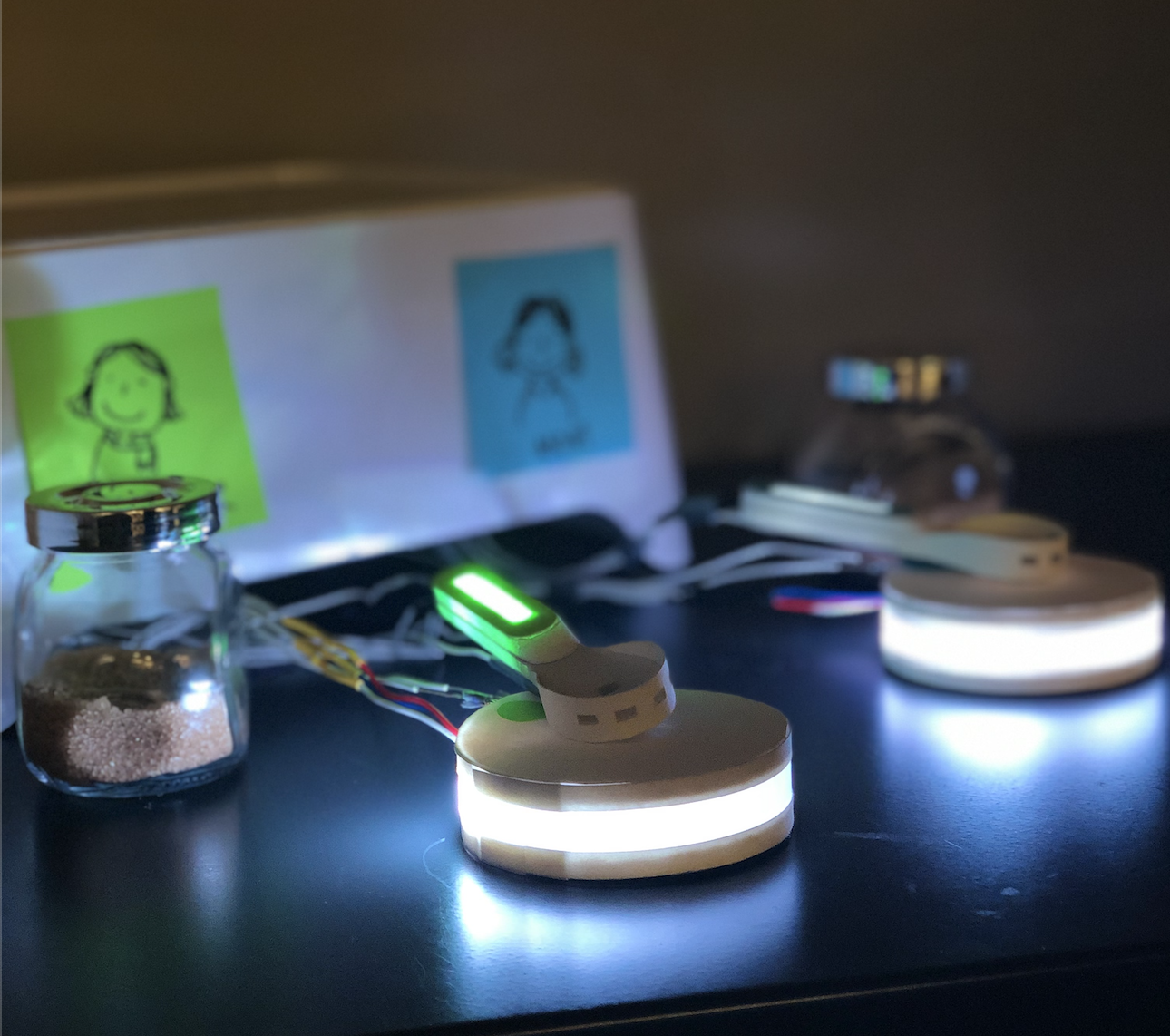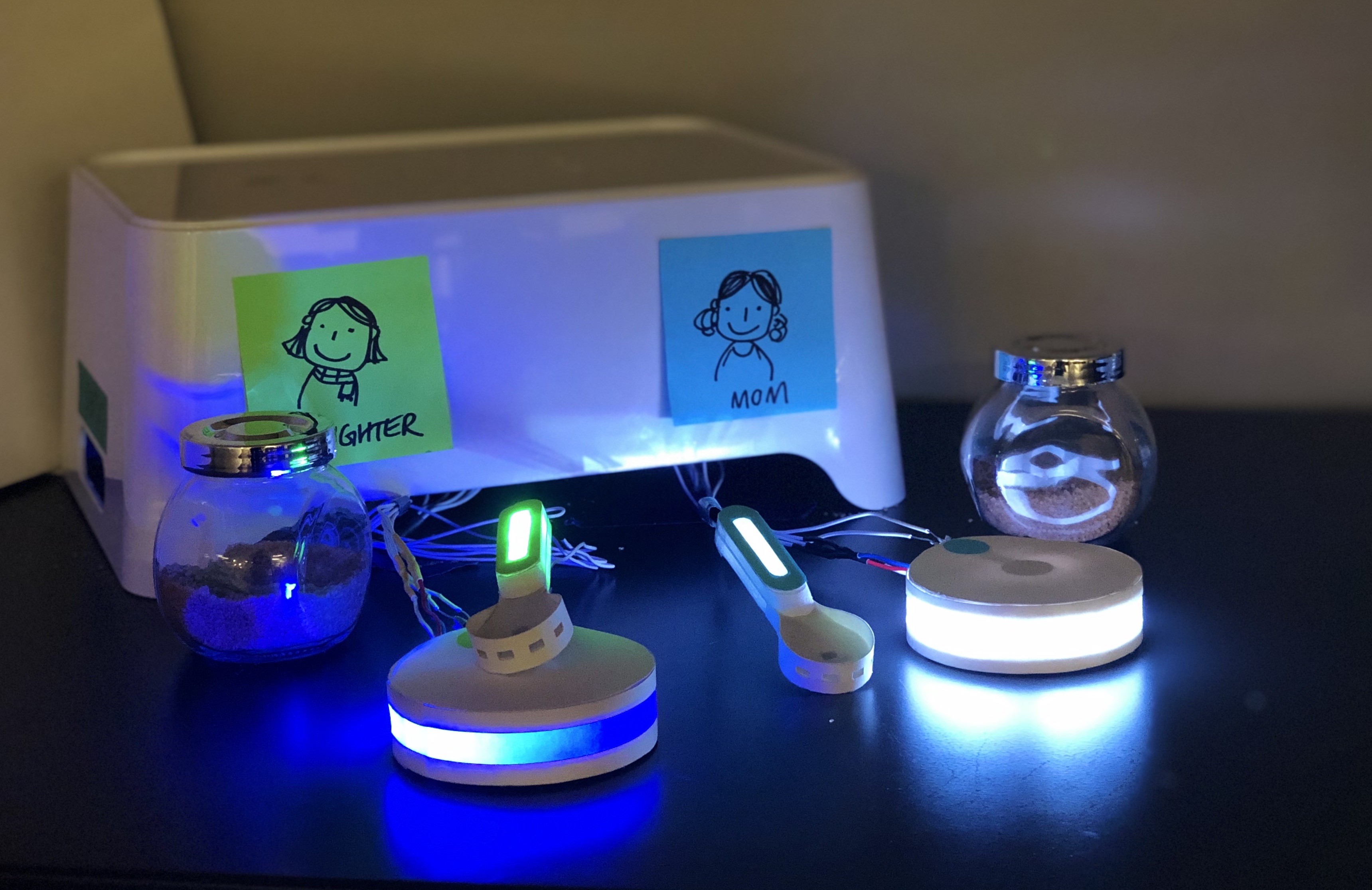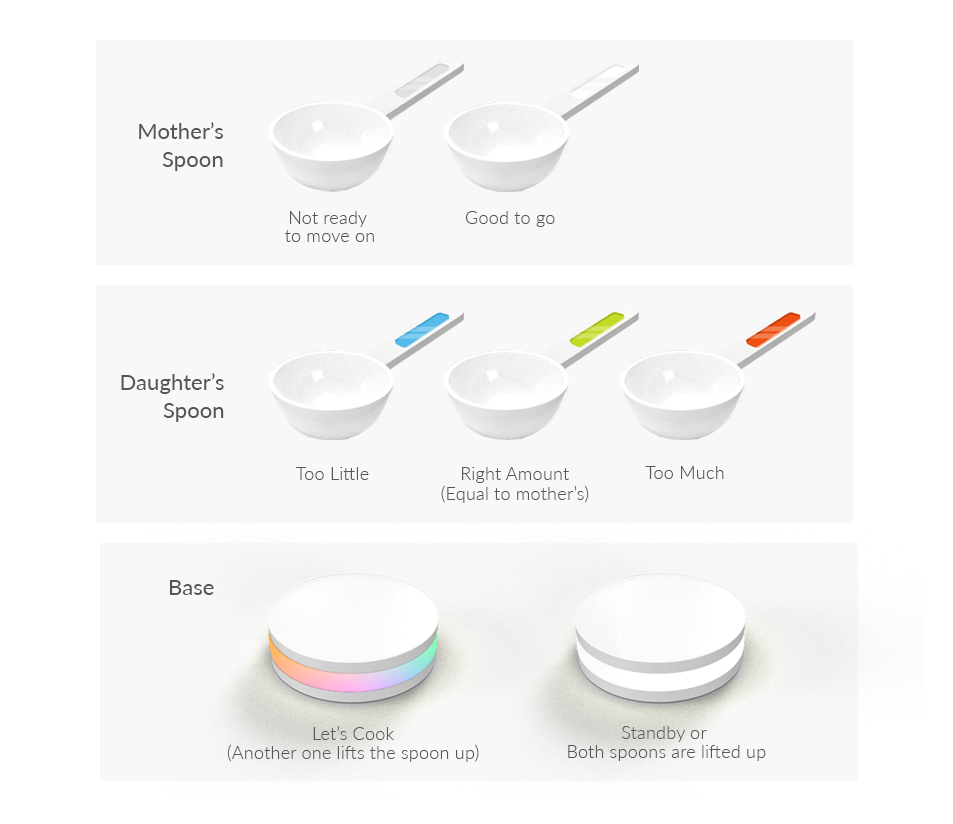Final Prototype
We created an ambient device that helps Sruthi (our user) prepare food just like her mother. It also allows her to cook with her mother while living thousands of miles apart. Our device aims at connecting people over distances through a shared activity. The device - a set of spoon and stand, is connected over wi-fi and displays information through ambient light
Both mother and daughter have a set. When her mother starts putting the spices in the food i.e. by lifting up the spoon, Sruthi’s enchanted stand changes color. Once Sruthi has lifted the spoon both stands stay at a constant color. This informs her mother that Sruthi is ready to use the spices.
Her mother then intuitively measures out the spices in her spoon. Sruthi follows by scooping up the spices in her spoon. Sruthi’s spoon glows blue if the spice level in the spoon is too low, red if the spice level is too high and green if it’s just right. Once Sruthi has the correct amount of spices in her spoon, her mother’s spoon will glow. This informs her mother that she can now proceed to the next spice. One by one they cook the whole meal together which acts as bonding as well as a teaching exercise.
One particle board was assigned to each of the mother and the daughter. These interacted which each other and lit up in rainbow colours when either the mother or the daughter lifted their spoon to indicate they were ready to cook. In an ideal scenario, the two photocells (one for the mothers' spoon, one for the daughters' spoon) would be on separate particle boards as well, but the limitations associated with publishing events every second would create a delay in transmitting one photocell reading to the other, which would, in turn, affect the functionality of the prototype. So, although particle connectivity has been implemented for the neopixels, the photocells are on a common board for the experience prototype.
